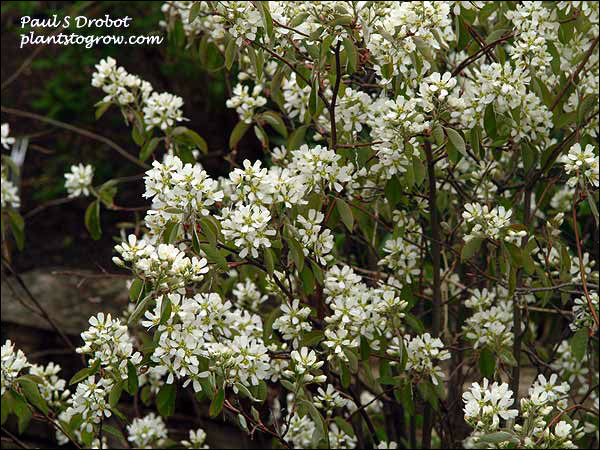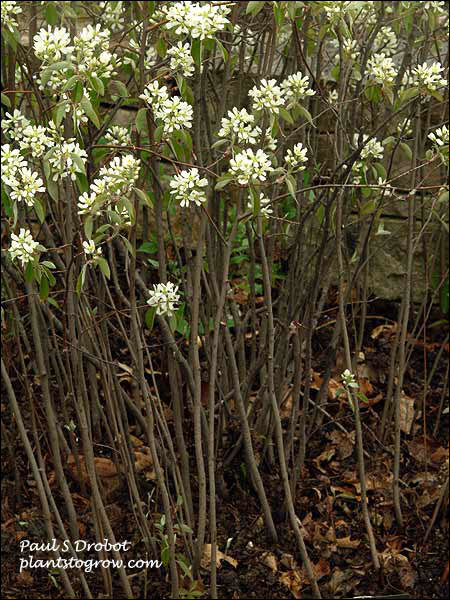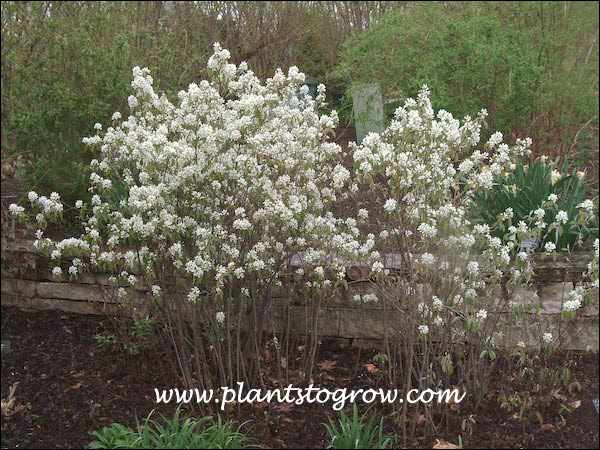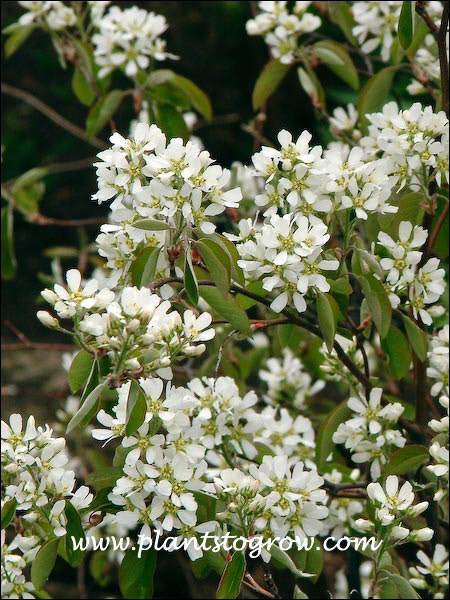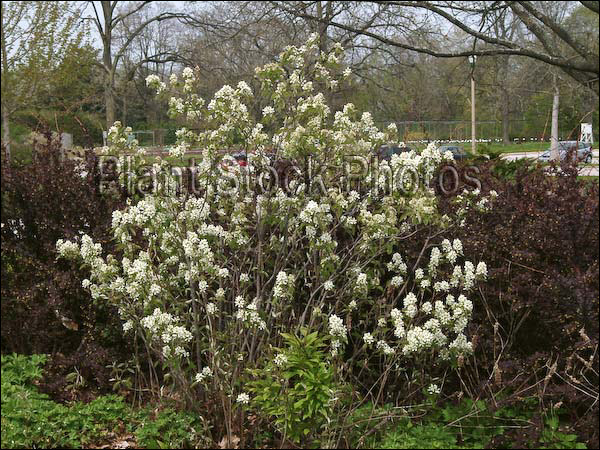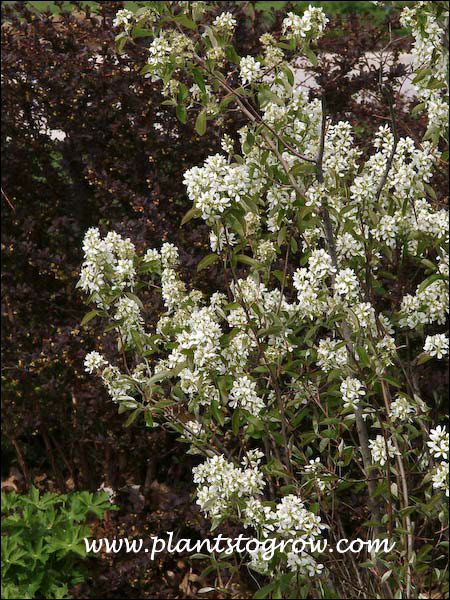| Description | Prince Williams Serviceberry (Amelanchier canadensis) is an upright suckering plant with silver gray bark and white flower at the end of April to early May. |
|---|---|
| Pronunciation | (am-e-LANG-key-er) |
| Plant Type | All Plants, Trees Deciduous |
| Hardiness Zone | 4-7 |
| Sunlight | full, mostly sunny, semi-shaded sites, will tolerated hot sunny areas if the soil has ample moisture |
| Moisture | average to moist, tolerates dry once established |
| Soil & Site | average, moist well drained soils |
| Temperature | hardy to -25 to -30 degrees F |
| Flowers | white, borne in pendulous racemes at the end of April before the leaves have appeared |
| Fruit | edible fruit starts green, changes to red and than ripens to a purple color, botanically called a pome, birds love this fruit |
| Leaves | simple, opposite, emerge as a grayish bronze color changing to green, excellent fall colors, yellows, reds and oranges |
| Stems | gray smooth bark |
| Dimensions | Reaches 8-10 feet tall by a 5-6 foot spread. |
| Propagation | plant patent #6040, cuttings, tissue culture |
| Cultivar Origin | Form selected in Madison, Wisconsin USA |
| Misc Facts | The species plant has a few nick names. June berry because the fruit ripens in June, Serviceberry because it bloomed during the spring funeral services, also resembles the English fruit tree (Sorbus domestica) called service tree and Shadblow because it bloomed when the Shad ran in the spring. AKA: Canada serviceberry, Canada shadbush, thicket serviceberry, Juneberry, shadblow serviceberry, shadblow, shadbush, shadbush serviceberry, sugarplum, Thicket Serviceberry |
| Author's Notes | As kids we picked the fruit from the Amelanchier growing wild in Wisconsin and they were all growing in open areas in the woods . |
| Notes & Reference | #01-Manual of Woody Landscape Plants (Michael Dirr), #39-The Natural History of Trees (Donald Cultrose Pattie) |

Cart
